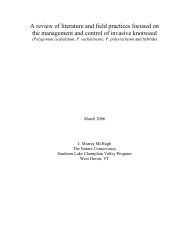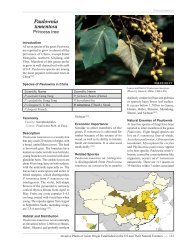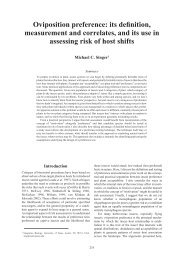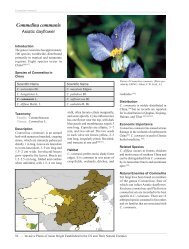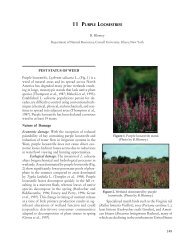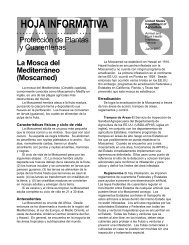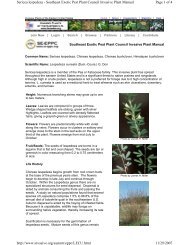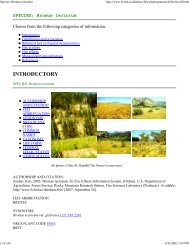Steps for the dissection of male Spodoptera moths and notes on ...
Steps for the dissection of male Spodoptera moths and notes on ...
Steps for the dissection of male Spodoptera moths and notes on ...
Create successful ePaper yourself
Turn your PDF publications into a flip-book with our unique Google optimized e-Paper software.
<str<strong>on</strong>g>Spodoptera</str<strong>on</strong>g> ornithogalli<br />
The genitalia <str<strong>on</strong>g>of</str<strong>on</strong>g> <str<strong>on</strong>g>Spodoptera</str<strong>on</strong>g> ornithogalli are most easily distinguished by <str<strong>on</strong>g>the</str<strong>on</strong>g> shape <str<strong>on</strong>g>of</str<strong>on</strong>g><br />
<str<strong>on</strong>g>the</str<strong>on</strong>g> clavus, which resembles a hairy toe. It is nearly identical to <str<strong>on</strong>g>the</str<strong>on</strong>g> genitalia <str<strong>on</strong>g>of</str<strong>on</strong>g> S.<br />
pulchella; notice that <str<strong>on</strong>g>the</str<strong>on</strong>g> coremata are <str<strong>on</strong>g>of</str<strong>on</strong>g> unequal size.<br />
1. Clavus shaped as a hairy toe.<br />
2. Costal process small, el<strong>on</strong>gate, narrow, <str<strong>on</strong>g>and</str<strong>on</strong>g> slightly curved.<br />
3. Ampulla el<strong>on</strong>gate <str<strong>on</strong>g>and</str<strong>on</strong>g> curved.<br />
4. Basal sclerite rounded.<br />
5. Juxta triangular, with l<strong>on</strong>g dorsal process.<br />
6. Coremata with two lobes.<br />
<str<strong>on</strong>g>Spodoptera</str<strong>on</strong>g> ornithogalli<br />
4<br />
Clavus (1) <str<strong>on</strong>g>and</str<strong>on</strong>g><br />
costal process (2)<br />
Ampulla (3) Juxta (5)<br />
1




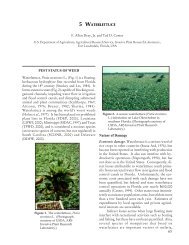

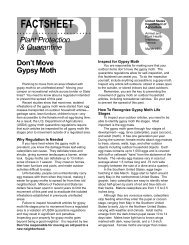
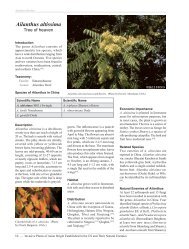
![A Guide to the Control and Management of Invasive Phragmites [PDF]](https://img.yumpu.com/27321025/1/190x190/a-guide-to-the-control-and-management-of-invasive-phragmites-pdf.jpg?quality=85)

